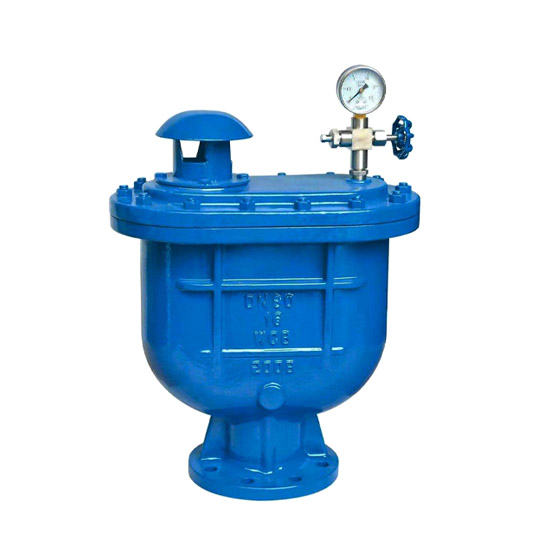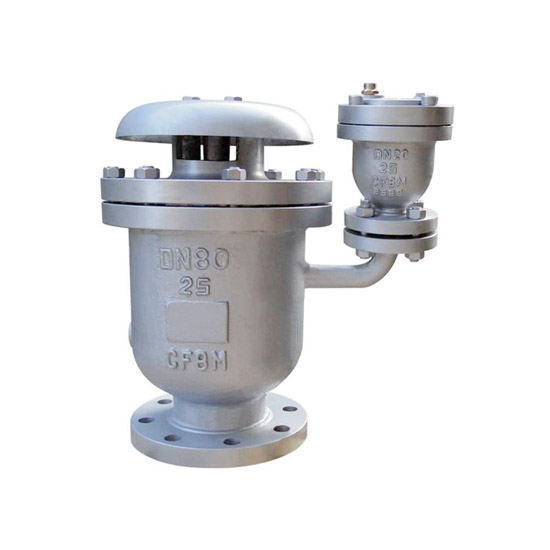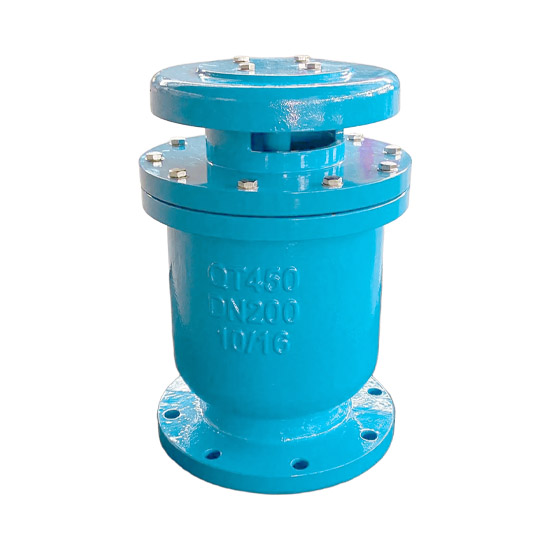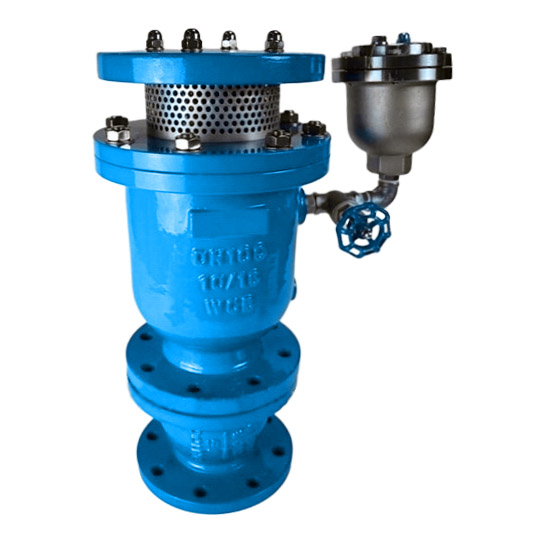I. Product Overview
Full Name: CARX Composite Air Release Valve (Also known as: Composite Air Valve, Automatic Pipeline Air Intake and Exhaust Valve)
Definition: An intelligent valve installed at high points or air-blocked sections of fluid pipeline systems (such as water supply, heating, HVAC circulation). Utilizing a float-lever mechanism, it automatically performs rapid air discharge during initial filling, continuous micro air release during operation, and quick air intake during pump shutdown or negative pressure conditions. This prevents air blockage, water hammer, and vacuum damage, enhancing system efficiency and safety.
Core Functions:
Pipeline Air Discharge: During initial filling or post-maintenance water injection, the large exhaust port rapidly expels air, preventing air blockage and improving water delivery efficiency.
Micro Air Release: During normal operation, small amounts of air accumulating at the top of the valve chamber are continuously discharged through the small port, maintaining full-pipe flow.
Negative Pressure Protection: In cases of pump shutdown, power failure, or pipeline vacuum, the valve automatically draws in air to balance pressure, preventing deformation, vibration, or rupture.
II. Design and Manufacturing Standards
(1) Design Specifications
Reference Standards:
Complies with CJ/T 217-2005 “Composite High-Speed Air Intake and Exhaust Valve for Water Supply Pipelines” or equivalent international standards (e.g., AWWA C512, BS EN 1074-3), defining structural dimensions, operating logic, and performance criteria.
Flange connections follow GB/T 17241.6 “Integral Cast Iron Flanges” or GB/T 9113 “Integral Steel Pipe Flanges” (for stainless steel bodies), ensuring interface compatibility.
Pressure and strength design based on GB/T 13927 “Industrial Valve Pressure Testing” and GB/T 1048 “Nominal Pressure,” ensuring safe pressure resistance.
Material Selection:
Valve Body / Cover:
Ductile Iron (QT450-10): High vibration and corrosion resistance, suitable for standard water systems.
Stainless Steel (304/316): Resistant to seawater, chemical corrosion, or sanitary-grade applications (e.g., pharmaceutical, food pipelines), compliant with GB/T 1220 “Stainless Steel Bars.”
Float / Valve Disc Assembly:
Float: Stainless Steel (SUS 304/316), lower density than water, abrasion-resistant.
Valve Disc: NBR or EPDM rubber sealing rings, temperature range -30°C to 100°C (FKM optional for high-temperature steam), hardness 60±5 Shore A (HG/T 2579 “Oil-Resistant Rubber Sealing Materials”).
Lever / Dust Screen: Made of aluminum bronze or stainless steel, deformation-resistant and corrosion-proof.
Structural and Functional Design:
Dual Exhaust Port System: Large port (for rapid air discharge during filling) + small port (for continuous micro air release), automatically switched by float position.
Flow Deflection Protection: Inlet equipped with deflector to prevent direct water impact on the float, enhancing operational stability.
Dust Screen Protection: External mesh at valve outlet, diameter 6–8mm (flow area ≥ 2× pipeline cross-section), prevents debris from clogging intake/exhaust ports.
(2) Manufacturing Process
Production Process Control:
Follows GB/T 19001 Quality Management System, covering raw material inspection (material certificates, hardness tests), machining, non-destructive testing, and assembly calibration.
Valve body casting tolerance: GB/T 1804 grade m (medium level) for unspecified linear dimensions, ensuring component fit accuracy.
Surface Treatment:
Ductile iron parts: Hot-dip galvanized (zinc layer ≥ 85μm, GB/T 13912) or epoxy-coated for corrosion resistance.
Stainless steel parts: Pickled and passivated for improved finish and corrosion resistance.
Key Process Standards:
Welding Requirements (Stainless Steel Models): Flange-to-body welding follows GB 985.1 “Recommended Weld Groove,” weld strength ≥ base material, post-weld radiographic inspection (JB/T 4730.2) Grade I qualified.
Float Assembly Calibration: Float center of gravity designed for precise buoyancy-driven actuation. Factory testing verifies large port exhaust, small port micro release, and negative pressure intake functions without jamming.
Sealing Control: Rubber seals installed with uniform compression. Leak-free performance verified under 0.02MPa low pressure and nominal pressure sealing tests (GB/T 13927).
Factory Inspection:
Hydrostatic Strength Test: 1.5× nominal pressure held for 30 minutes (e.g., PN1.6MPa → 2.4MPa), no deformation or leakage of valve body.
Air Shut-Off Pressure Test: Float automatically closes large port when air pressure ≥ 0.1MPa (actual test > 0.4MPa for optimal performance), ensuring reliable sealing after air discharge.
Water Seal Pressure Verification: Under ≤ 0.02MPa water pressure, 5-minute hold with no leakage, preventing water escape during non-exhaust conditions.
Operational Flexibility Sampling: At least 3 full open-close cycles tested for smooth lever linkage without jamming.
III. Operating Principle
Pipeline Filling Phase (Rapid Air Discharge):
During initial water injection into an empty pipe, the float rests at the bottom of the valve chamber due to its own weight. The large exhaust port fully opens, allowing high-speed air discharge (driven by Bernoulli effect), significantly reducing filling time.
Once the valve chamber is filled with water, buoyancy lifts the float to the top sealing surface, closing the large port and stopping bulk air release.
Normal Operation Phase (Micro Air Release):
During continuous water flow, small amounts of gas (e.g., dissolved air) rise and accumulate at the top of the valve chamber.
Gas pressure lowers the water level, causing the float to descend and open the small port. Air is continuously discharged through the small port (micro release mode), maintaining full-pipe conditions.
Pump Shutdown / Negative Pressure Phase (Rapid Air Intake):
In the event of power failure, pump stoppage, or vacuum formation, water level drops or flow ceases in the valve chamber, and the float loses buoyancy and falls.
The large port opens rapidly, allowing external air to enter and balance pipeline pressure, preventing deformation, vibration, or rupture (response pressure ≤ 0.035MPa).
热门标签: Composite High-Speed Air Inlet and Release Valve / Composite Air Release Valve /





